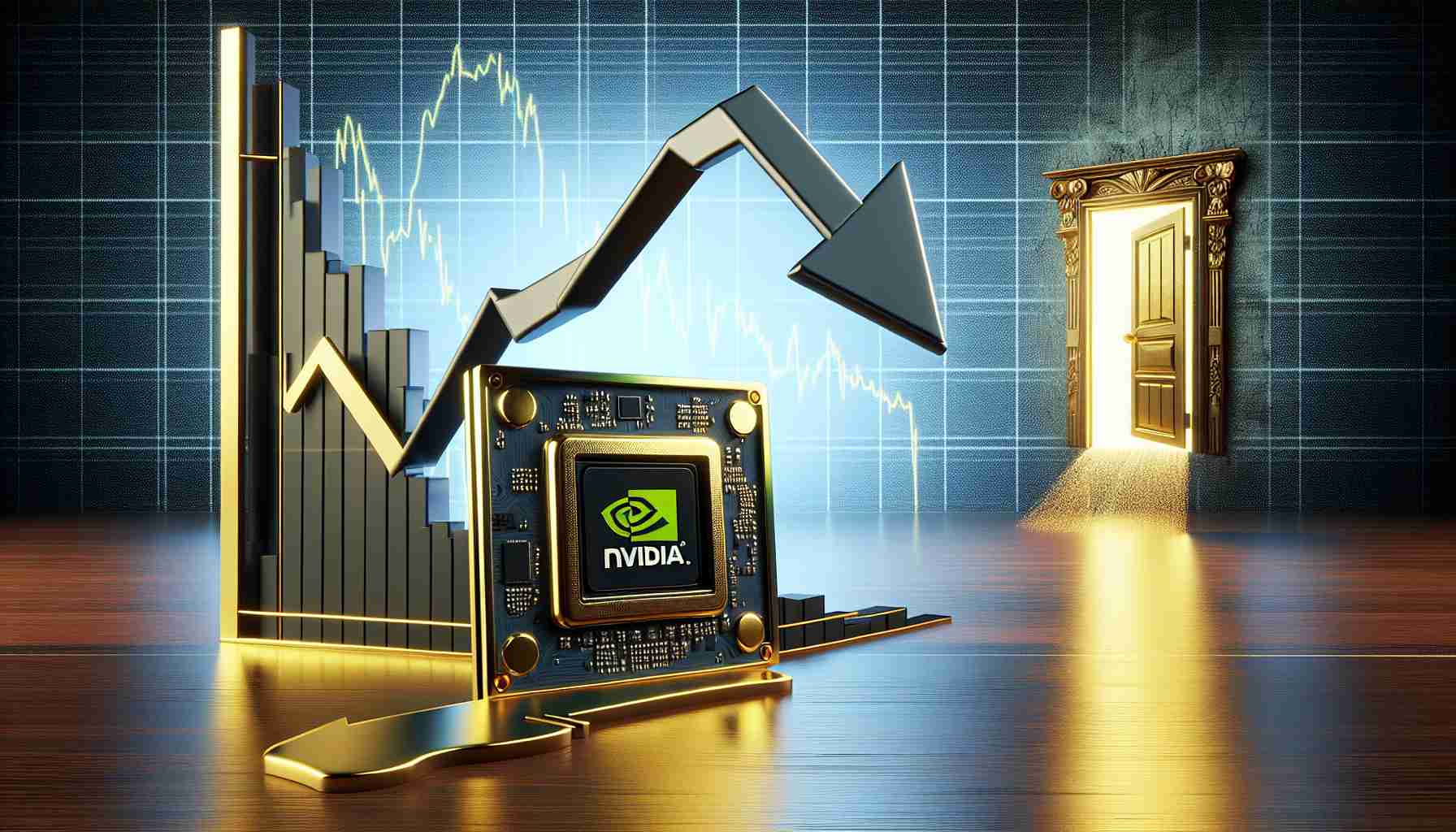- Nvidia’s stock dropped 5% on Monday due to new tariffs announced by President Trump.
- The tariffs include a 10% rate on Chinese imports and a 25% rate on imports from Mexico and Canada.
- Nvidia is facing additional challenges with potential restrictions on AI chip exports to China.
- The company’s share price experienced a 17% decrease recently, leading to a loss of $589 billion in market capitalization.
- Experts warn that increased import costs for data processing equipment could lead to lower demand.
- Rival companies like AMD and Qualcomm are also affected by the tariff news, experiencing stock declines.
- The tech industry’s landscape is increasingly complicated due to ongoing tariff and trade developments.
In a shocking turn of events, Nvidia’s stock took a nosedive, plummeting as much as 5% in early trading this Monday. Investors were blindsided by President Trump’s announcement of new tariffs—10% on imports from China and a staggering 25% on those from Mexico and Canada. This unexpected move sent ripples through the tech-heavy Nasdaq, which fell over 2%.
Nvidia was already in hot water following discussions about tighter export restrictions on its crucial AI chips to China, which account for 17% of its 2024 sales. As speculations swirled about potential limitations, the chip giant saw its share price crumble by an unprecedented 17% in a single day, erasing a jaw-dropping $589 billion from its market capitalization.
Though semiconductors themselves aren’t directly affected by these new tariffs, industry experts warn that imports of data processing equipment—which include servers powered by AI chips—will likely face higher costs. Bernstein analyst Stacy Rasgon highlighted the potential for decreased demand as prices rise, noting that the US imported a colossal $39 billion worth of this equipment from China last year alone.
With Nvidia’s CEO meeting with Trump just days before the announcement, the stakes for the chipmaker couldn’t be higher. It’s not just Nvidia feeling the heat; rivals like AMD and Qualcomm are also seeing their stocks dip in response to the tariff news.
As the situation develops, one thing is clear: the constantly shifting landscape of tariffs and trade poses a formidable challenge to the tech industry. Will Nvidia rebound, or is more turbulence ahead? Stay tuned!
Market Turmoil: Nvidia Faces New Challenges Amid Tariff Turbulence!
Overview
Nvidia’s recent stock plunge serves as a stark reminder of the volatile interplay between global trade policies and the tech industry. The company, heavily reliant on its sales of AI chips and data processing equipment, finds itself at a critical juncture. With new tariffs imposed by the Biden administration, Nvidia’s ability to maintain its robust growth trajectory is at risk.
Innovations Impacting Nvidia
Nvidia, known for leading advancements in AI and deep learning technologies, is not just sitting idle in response to market turbulence. The company has been investing in new AI innovations, including:
– Next-Gen GPUs: Nvidia has been developing more efficient graphics processing units that cater to the rising demand for AI applications.
– Cloud Partnerships: Strengthening collaborations with cloud service providers to provide AI-as-a-Service, diversifying its revenue streams.
– Sustainability Initiatives: Investing in greener technologies to produce chips, ensuring competitiveness and compliance with tightening environmental regulations.
Key Market Insights
Market analysts are predicting a slowdown in the semiconductor sector amidst rising operational costs and reduced consumer spending. As data processing equipment costs rise due to tariffs, companies are expected to look for alternative suppliers or modify their purchasing strategies.
New Trends to Watch
1. Supply Chain Adaptation: Firms are increasingly focusing on diversifying their supply chains to mitigate risks associated with tariffs.
2. Push for Local Manufacturing: The U.S. government is incentivizing domestic manufacturing of semiconductors, which could benefit companies like Nvidia in the long term despite short-term challenges.
3. AI Adoption Acceleration: Despite economic uncertainty, the continuous push towards AI integration in various sectors indicates a long-term growth opportunity for companies invested in AI technology.
Important Questions:
1. What are the immediate effects of the new tariffs on Nvidia?
The immediate effects include increased costs for data processing equipment, which may lead to a decrease in demand and further impact Nvidia’s sales and stock price.
2. How can Nvidia strategically navigate this challenging environment?
Nvidia can focus on diversifying its supply chain, investing in efficiencies, and exploring new markets to offset the impacts of tariffs while leveraging its innovative technologies to drive sales.
3. What is the long-term outlook for the semiconductor industry in light of these tariffs?
While immediate impacts may lead to price increases and reduced demand, long-term initiatives promoting domestic manufacturing and AI growth could stabilize the industry, especially for firms adapting to new market dynamics.
Related Links
For more information on Nvidia and the semiconductor industry, visit the main domain: Nvidia.




















